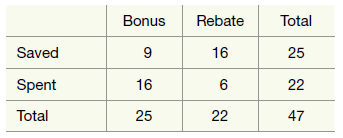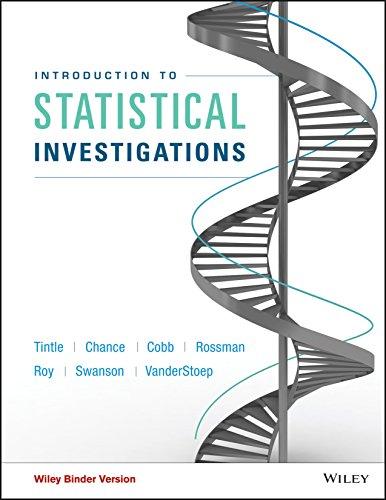Reconsider the previous exercise. In the article that appeared in the Journal of Behavioral Decision Making, the
Question:

a. Use the Two Proportions applet to test the hypotheses stated in the previous question. Be sure to specify the statistic you used and its value (from the study). Also, find and report the p-value.
b. Next, use the Multiple Proportions applet to test the hypotheses stated in the previous question. Be sure to specify the statistic you used and its value (from the study). Also, find and report the p-value.
c. How do the p-values from parts (a) and (b) compare? Are they about the same or very different? Explain why.
Data from previous exercise
Do people tend to spend money differently based on perceived changes in wealth? In a study conducted by researchers Epley et al. (2006), 47 Harvard undergraduates were randomly assigned to receive either a bonus check of $50 or a rebate check of $50. A week later, each student was contacted and asked whether they had spent any of that money, and if yes, how much. In this exercise we will focus on whether or not they had spent any of that money as the response variable of interest. It turned out that 36% of those in the bonus group spent none of the money, compared to 73% in the rebate group.
Step by Step Answer:

Introduction To Statistical Investigations
ISBN: 9781118172148
1st Edition
Authors: Beth L.Chance, George W.Cobb, Allan J.Rossman Nathan Tintle, Todd Swanson Soma Roy





